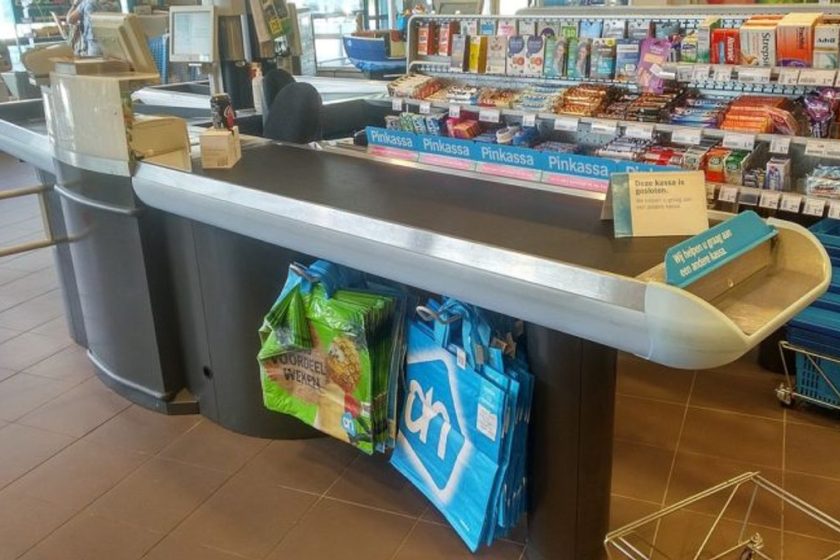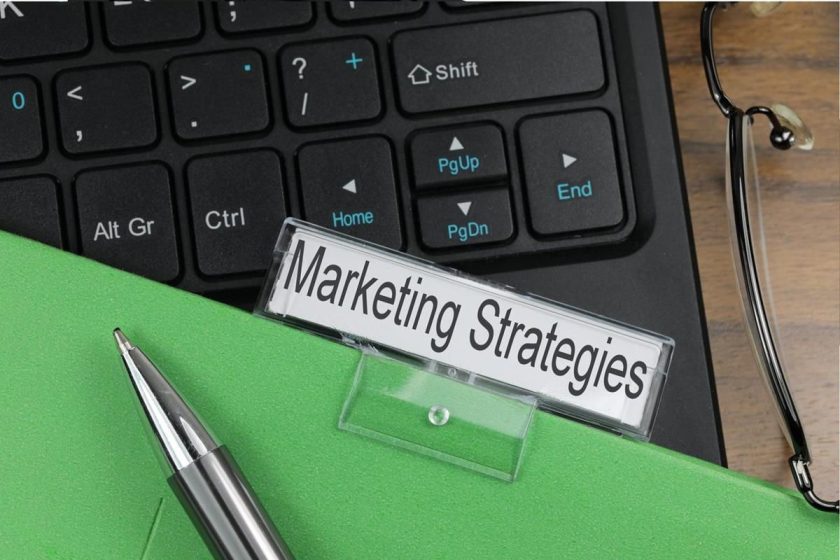You’ve invested time and resources into crafting a stellar new brand identity
– now it’s time to unveil it to the world! A successful brand rollout is essential to ensure that your new brand identity makes the maximum impact. This guide will provide you with a comprehensive strategy for your brand rollout, ensuring that every aspect of your brand’s introduction to the market is carefully planned and executed for optimal results.
Key Takeaways
- Develop a detailed rollout strategy that covers digital presence, employee engagement, and customer communication.
- Implement a staggered launch approach, utilizing social media and influencers across different time zones for continuous engagement.
- Continuously monitor campaign performance for iterative improvement and adapt branding elements based on feedback.
- Generate buzz with creative marketing and promotions, leveraging events and special offers to engage with the new brand identity.
- Maintain brand growth by establishing continuous improvement processes and adapting to market changes and consumer trends.
Developing a Strategic Framework for Brand Rollout
Crafting a Detailed Rollout Plan
A successful brand rollout hinges on a meticulously crafted plan that aligns with your company’s vision and market position. Developing a comprehensive marketing plan with diverse channels is essential to attract prospects effectively. This includes setting clear goals, defining your unique selling proposition, and ensuring that every aspect of the rollout amplifies your brand’s message.
To ensure a coordinated approach, consider the following steps:
- Identify key milestones and deliverables.
- Assign responsibilities to team members.
- Establish a timeline for each phase of the rollout.
- Prepare contingency plans for potential setbacks.
A staggered engagement on social channels, aligned with global time zones, can create a sustained buzz rather than a one-time spike. Additionally, leveraging local influencers can catalyze broader engagement.
Remember, the rollout plan is not just a launch-day event but a comprehensive strategy that extends beyond, ensuring a smooth transition and sustained brand presence.
Employee Training and Engagement
For a brand rollout to be successful, it is crucial to ensure that employees are not only informed but also engaged and well-trained. Creating a sense of urgency is the first step in motivating employees to embrace the new brand with enthusiasm. This involves communicating the vision and the ‘why’ behind the change, fostering excitement and unity.
Employee engagement can be significantly enhanced by recognizing and rewarding efforts. According to Gallup, individuals who receive recognition are more likely to be productive and engaged. To facilitate this, consider implementing a rewards system that aligns with the use of new tools or adherence to the brand guidelines.
Hands-on learning experiences are invaluable. Practical training sessions and mentorship programs enable employees to gain real-world experience and develop problem-solving skills. It’s essential to simulate scenarios that employees may encounter, which prepares them for on-site challenges.
Feedback is a powerful tool for continuous improvement. Establish channels for employees to voice their opinions and concerns about the new brand and its implementation. Act on this feedback to refine training programs and ensure that all team members are confident in their roles within the new brand framework.
Customer Communication and Feedback
Effective customer communication and feedback mechanisms are the cornerstone of any successful brand rollout. Consistent messaging is key for brand awareness, and it’s crucial to engage with customers across various platforms. To ensure a personal touch, brands should:
- Reply to comments and messages promptly and thoughtfully
- Ask for feedback through polls and surveys
- Address queries and concerns effectively
Such personal engagement humanizes your brand and boosts affinity. It also provides valuable insights into customer needs and preferences, allowing you to refine marketing accordingly.
EXECUTE TARGETED AD CAMPAIGNS
Leveraging customer feedback is essential for refining your brand’s message and offerings. Partner with your sales and success teams to learn about your customers. Whether you join a call, send out a survey, or consult with your internal team, stress how customer intel will help you create better campaigns and drive more sales. Encourage the use of testimonials and reviews to build trust and credibility, showcasing your commitment to customer satisfaction.
Launch-Day Dynamics
Digital Presence and Social Media Strategy
In the digital age, a brand’s online presence is paramount. Establishing a strong online presence is the first step towards a successful brand rollout. Social media platforms, with over 4.2 billion users, are fertile grounds for building brand awareness and fostering customer relationships.
ESTABLISH CLARITY ON OBJECTIVES AND AUDIENCE is crucial. Begin by defining core objectives and identifying your target audience. Consider what you aim to achieve: is it driving organic traffic to your website or boosting engagement on the platforms themselves?
Designing an industry-leading social media campaign is not just about posting content; it’s about creating a narrative that resonates with your audience. This involves meaningful research, crafting creative content, and tracking metrics to gauge impact.
Finally, the Ultimate Small Business Marketing Strategy Template can serve as a valuable tool in this endeavor, offering a customizable blueprint to save time, streamline efforts, and unlock growth opportunities.
Physical Branding and Signage Updates
When it comes to physical branding and signage updates, it’s essential to manage the transition with care. Begin by updating your website, social media, and digital presence, setting the stage for the new brand identity. Subsequently, replace physical branding elements like signage and printed materials in a phased manner to ensure consistency across all customer touchpoints.
The process of updating physical branding should be strategic and reflect the core values of the new brand identity.
Here are some steps to consider:
- Announce the rebrand through PR, social media campaigns, and customer communications.
- Educate and excite your team about the new brand to foster internal support.
- Monitor customer feedback and be prepared to iterate on the new design.
A successful update to physical branding can lead to improved brand recognition and a sense of brand rejuvenation. However, it’s crucial to be aware of potential pitfalls such as budget constraints or negative customer reactions. Addressing these concerns proactively will help in maintaining forward momentum and securing a competitive edge.
Public Relations and Customer Outreach
Effective public relations (PR) and customer outreach are pivotal in ensuring a successful brand rollout. Engage with your audience through various channels to foster a sense of community and belonging. Transparency in communication builds trust and can turn customers into brand advocates.
- Reply to comments and messages promptly and thoughtfully
- Ask for feedback through polls and surveys
- Address queries and concerns effectively
These actions not only humanize your brand but also provide valuable insights into customer needs and preferences, which is crucial for refining your marketing strategies.
Inadequate customer communication can undermine trust and loyalty. Proactive communication and transparency about the rebrand are essential.
Remember to coordinate with your customer support and social teams to handle any increase in inquiries effectively. Overlooking the practical aspects of a rebrand, such as updating business cards and changing signage, can lead to costly oversights. Therefore, ensure that all practical details are accounted for in your rollout plan.
Leveraging Change Management for Rollout Success
Monitoring Campaign Performance
To ensure a brand rollout campaign is on the path to success, monitoring campaign performance is crucial. By setting clear metrics that reflect campaign objectives, brands can measure success and identify areas for improvement. Analytics and reporting tools are indispensable in this process, providing insights that guide strategic adjustments.
- Determine key performance indicators (KPIs) relevant to the campaign goals.
- Utilize AI-powered social listening tools to gauge audience sentiment.
- Track engagement metrics such as clicks, likes, comments, and shares.
By continuously analyzing performance data, brands can refine their strategies in real-time, enhancing the effectiveness of their campaigns.
It’s essential to not only track the quantitative aspects of a campaign but also to understand the qualitative feedback from the audience. This dual approach allows for a comprehensive view of the campaign’s impact and informs iterative testing and adaptation for future initiatives.
Iterative Testing and Adaptation
In the realm of brand rollout, iterative testing and adaptation are crucial for fine-tuning the strategy to perfection. By continuously evaluating the performance of different aspects of the brand, companies can make informed decisions to enhance their market presence. This process is akin to agile product development, where the focus is on meeting customer needs through rapid cycles of testing and feedback.
- Early validation of ideas through prototypes or screenshots
- Filtering concepts based on various criteria such as time to market or customer insights
- Quick iteration to refine products with minimal investment
The key to successful brand adaptation lies in the ability to stay agile and responsive to market feedback, ensuring that the brand remains relevant and competitive.
The table below outlines the stages of iterative testing and the corresponding actions to be taken:
| Stage |
Action |
| Ideation |
Gather initial feedback on concepts |
| Prototype |
Test with a small user group |
| MVP |
Collect early market feedback |
| Full Launch |
Analyze customer data and refine |
By embracing this iterative approach, businesses can avoid the pitfalls of a static strategy and instead evolve with the dynamic auction landscape, ensuring continuous improvement and relevance in the market.
Stakeholder Engagement and Training
Effective stakeholder engagement and training are pivotal for the success of a brand rollout. Be receptive to critiques and suggestions from stakeholders, as their insights can significantly refine the rollout strategy. It’s crucial for the Implementation Team to take responsibility and adhere to commitments, fostering trust and demonstrating a capacity for positive change.
- Create A Sense of Urgency: Motivate stakeholders with a clear vision and purpose.
- Build A Guiding Coalition: Assemble a dedicated team to steer the rollout.
- Provide Hands-On Learning: Offer practical training sessions for real-world experience.
By seeking and acting on feedback, stakeholders feel valued and integral to the process, ensuring their ideas and concerns are taken seriously.
Promoting hands-on learning experiences through practical training sessions and mentorship programs is another key strategy. These programs should encompass equipment operation, safety protocols, and troubleshooting techniques, equipping employees with the skills needed for efficient management.
Marketing and Promotions to Amplify Impact
Creating Buzz with Special Promotions
Special promotions are a dynamic tool in the brand rollout arsenal, designed to capture attention and engage both new and existing customers. Maximize podcast reach and impact by leveraging a mix of active and passive marketing tactics. This can include cross-promotion with complementary brands, strategic press releases, and targeted social media advertising to create a sense of urgency and exclusivity around your brand relaunch.
To ensure these promotions resonate, it’s crucial to gather feedback and adjust strategies as needed. This iterative process helps refine promotional efforts for maximum effectiveness.
Referral marketing can serve as a powerful extension of your brand’s voice. Encourage word-of-mouth by implementing social media referral programs that offer:
- Custom links
- Promo codes
- Gamification elements
Each element should be designed to incentivize and reward customers for spreading the word about your brand. Continually assess the performance of these initiatives through social media analytics, focusing on audience reach, engagement levels, and response rates to optimize your approach.
Finally, execute targeted ad campaigns that connect with specific demographics. Use the unique ad formats and best practices of each platform—photo ads on Facebook, carousels on Instagram, and promoted tweets on Twitter—to build a consistent brand image and trust among your audience.
Hosting Events to Showcase the New Brand
Hosting events is a dynamic way to bring your new brand to life and directly engage with your audience. Ensure each event is tailored to reflect the brand’s values and mission, creating a cohesive and memorable experience. Start by understanding your target audience; this is key to designing an event that resonates with them.
When planning your event, consider the following objectives:
To project a modern and vibrant image.
To better connect with your target audience.
To stand out from competitors.
To renew interest around your offerings.
Additionally, use these events as an opportunity to gather feedback. This can be an invaluable source of insights for adjusting your brand strategy and improving future events. Remember, the goal is not just to showcase the new brand, but to create an environment where relationships with customers can be strengthened and celebrated.
Innovative Campaigns for Sustained Engagement
To maintain momentum post-launch, innovative campaigns are essential. Utilize social media, content marketing, influencer collaborations, and track brand metrics to build brand awareness and gain instant recognition in the digital age. These elements should work in tandem to create a cohesive narrative that resonates with your audience.
By integrating various marketing channels, brands can craft a multi-faceted approach that keeps the conversation going. This strategy not only engages customers but also turns them into brand advocates.
In the spirit of innovation, consider experimenting with ephemeral content across different platforms. This type of content, fleeting by nature, can generate a sense of urgency and exclusivity, encouraging more immediate and authentic interactions.
To measure the effectiveness of these campaigns, it’s crucial to monitor key performance indicators (KPIs). Here’s a simple table to track progress:
| KPI |
Baseline |
Target |
Current Status |
| Engagement Rate |
2.5% |
5% |
3.2% |
| Follower Growth |
1,000/mo |
3,000/mo |
1,500/mo |
| Conversion Rate |
1% |
2% |
1.3% |
Remember, the goal is to foster a dynamic and interactive brand presence that captivates and retains your audience over time.
Evaluating and Sustaining Brand Growth
Continuous Improvement and Feedback Loops
The journey of a brand doesn’t end with the rollout; it’s a continuous cycle of evaluation and refinement. To stay ahead, businesses must embrace the philosophy that their brand is never static but always evolving to meet the changing needs of the market. This approach involves a dynamic feedback loop where customer insights drive ongoing improvements.
- Monitor Performance: Regularly track key performance indicators (KPIs) to gauge brand health.
- Act on Feedback: Collect and analyze customer feedback to inform adjustments.
- Iterative Refinement: Continuously optimize strategies based on data and insights.
Embracing change is not a one-time event but a perpetual state of motion that ensures the brand remains relevant and competitive.
By integrating continuous improvement into the brand strategy, companies can adapt more quickly to market changes and consumer trends. This proactive stance not only helps in maintaining brand relevance but also in capitalizing on new opportunities for growth.
Long-Term Brand Awareness Strategies
Sustaining brand growth requires a vigilant approach to long-term brand awareness. Brands must not only capture but also maintain the attention of their audience over extended periods. This involves a strategic mix of retention and acquisition tactics, tailored to the evolving needs of the market.
- Partner with complementary brands to expand your reach
- Leverage special promotions and events for ongoing engagement
- Continuously monitor and adapt your social media strategy
To ensure lasting impact, brands should focus on both retaining existing customers and acquiring new ones, with distinct strategies for each track.
Adapting to market changes and consumer trends is crucial for maintaining relevance. Regularly updating your digital presence and physical branding elements can keep your brand fresh and top-of-mind. Additionally, engaging in co-marketing strategies with brands that share your target audience—but not your product offerings—can be an effective way to broaden your exposure.
In conclusion, a dynamic approach to brand awareness, characterized by commitment, vigilance, and adaptability, is essential for achieving sustained growth and engagement.
Adapting to Market Changes and Consumer Trends
In the rapidly changing digital world, staying ahead involves not just keeping up with technical changes but also embracing creative solutions. Brands must be agile, ready to pivot their strategies to maintain a competitive edge.
- Identify and monitor KPIs
- Spot and capitalize on new opportunities
- Manage the transition carefully
- Leverage marketing and promotions
- Ensure your brand resonates with your evolving customer base
Adapting to market changes is not just about altering your brand’s image; it’s about ensuring that every aspect of your brand strategy is responsive to the shifting landscapes of consumer behavior and market dynamics.
As consumer preferences shift and new demographics emerge, a brand refresh can be crucial to stay connected with your audience. It’s essential to manage the transition carefully, allowing customers to adjust to new branding without feeling overwhelmed by sudden changes.
Conclusion
In the dynamic landscape of branding, a well-executed rollout strategy is the capstone of your rebranding efforts. It’s the critical transition that introduces your new brand identity to the world, requiring meticulous planning, coordination, and communication. From leveraging digital platforms for immediate impact to managing the transition with care, every step should be designed to maximize engagement and minimize disruption. Remember to gather feedback and be ready to adapt, ensuring your brand remains relevant and resonant. Ultimately, a successful brand rollout isn’t just about unveiling a new logo or tagline—it’s about reaffirming your commitment to your customers and reinforcing your place in the market. Embrace this journey with enthusiasm and precision, and watch as your brand’s impact grows in reach and reputation.
Frequently Asked Questions
How do I develop a detailed rollout strategy for my new brand identity?
Start by mapping out all the key elements of your brand rollout, including digital updates, physical branding changes, employee training, and customer communication. Schedule these in phases to ensure a coordinated and effective introduction of your new brand identity.
What are the best ways to engage employees during a brand rollout?
Provide comprehensive training, share the vision and goals of the new brand, and encourage feedback. Creating a sense of ownership and excitement among employees is crucial for a successful brand rollout.
How can I use social media to enhance my brand’s launch day?
Develop a staggered social media strategy that follows the sun around the globe, ensuring continuous engagement. Collaborate with local influencers to amplify your message and reach a wider audience.
How often should I consider refreshing my brand?
It’s advisable to reassess your brand periodically, especially when you notice significant changes in your market, customer preferences, or if your brand no longer aligns with your company’s vision and values. However, the frequency can vary depending on the industry and individual company needs.
Can I refresh my brand on a tight budget?
Yes, it’s possible to refresh your brand on a tight budget by focusing on the most impactful elements, such as updating your digital presence or creating targeted marketing campaigns. Utilize in-house resources and prioritize changes that will make the most significant difference to your customers.
What should I do if customers react negatively to our new branding?
Listen to customer feedback and be prepared to make adjustments if necessary. Communicate the reasons behind the rebrand clearly and ensure that the changes align with customer values and expectations. It’s essential to manage the transition carefully and maintain an open dialogue with your audience.










